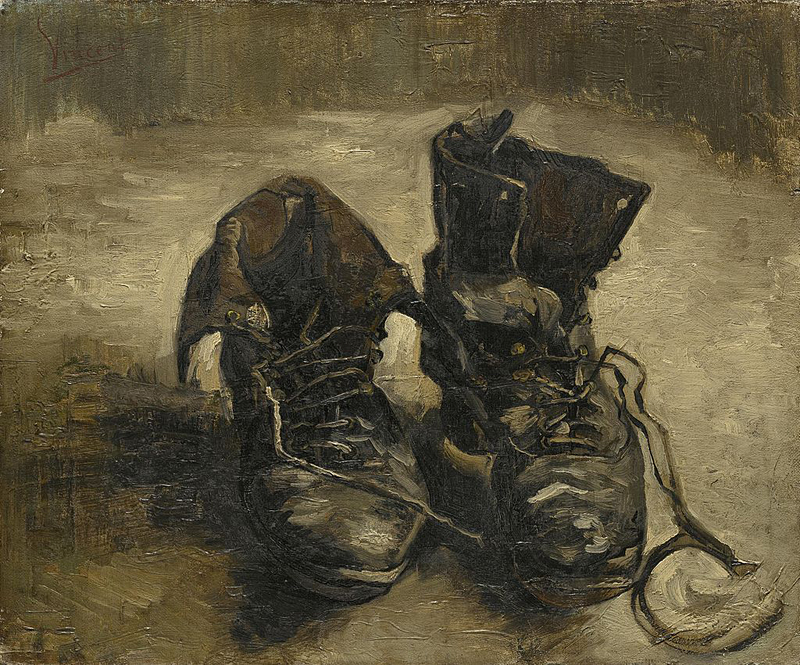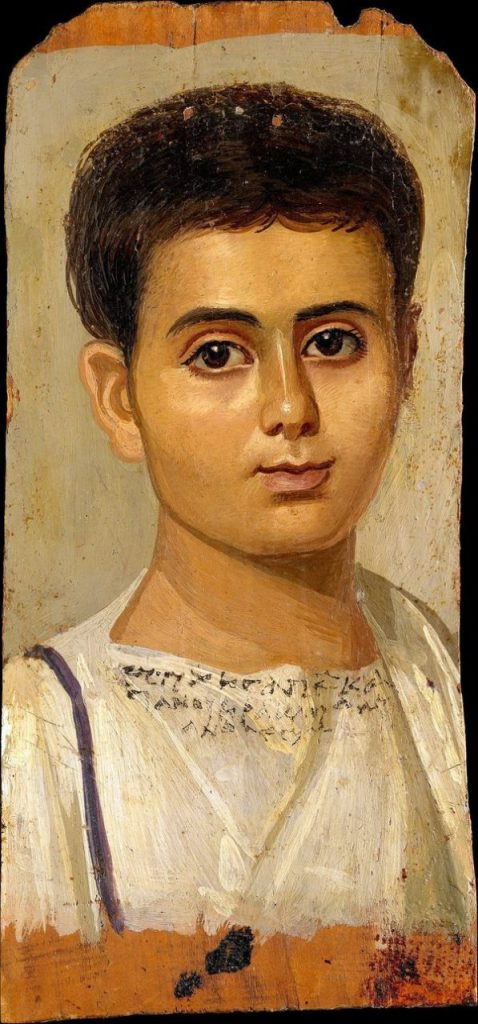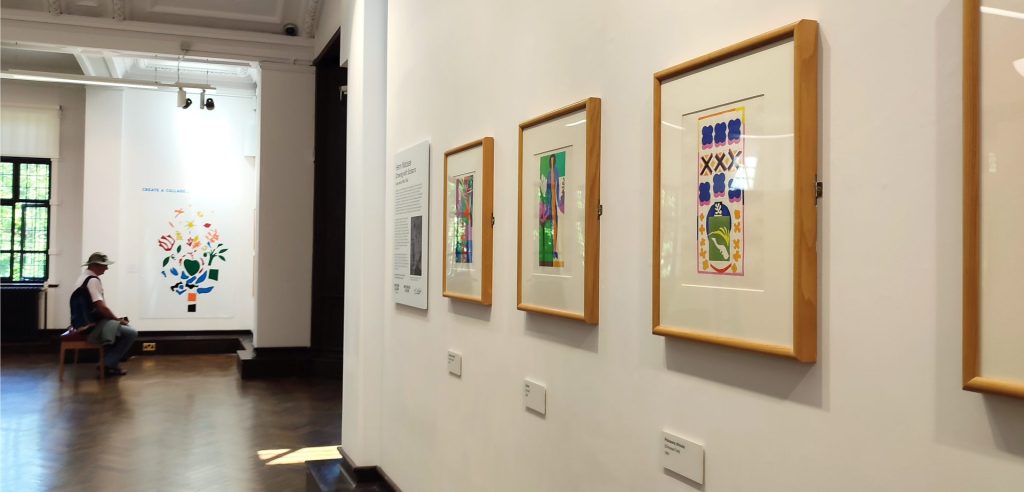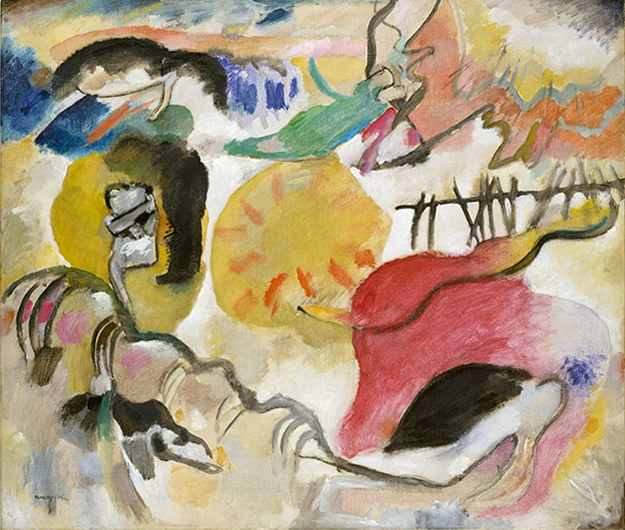“For practical purposes, perception is thinking.” Dr Edward de Bono
“90% of errors in thinking are errors of perception, not judgement.” Professor David Perkins, Harvard
Doesn’t that explain the importance of Art?
Table of Contents
1. What is Art?
2. Speculation
3. Definition
4. Examples
5. But can’t anything be Art?
6. The purpose of Art galleries
7. Conclusion
8. References – Relation to other theories
1. What is Art?
In 1997 Computer Scientists, Sociologists, Psychologists and Artists met on a long-term research project called “Electronic Landscapes”. Its aim was to explore ideas of large-scale Virtual Realities for Citizens of Europe. Artists were there for their understanding of experiences presented to the senses. Amidst confusion about each others’ fields, the week-long meetings in different parts of Europe had comedy moments. Exhausted computer scientists would interrupt and ask noted artists “So, what is Art?” – mostly just to be annoying, but lively debates would ensue.
The question is still open. Visiting an Art gallery, the experience can leave one cold. Especially in modern times when we’re immersed in scintillating digital imagery. Yet even if “Art” evades definition, it is as old as humanity, and never far from centre stage. Sometimes it is most of what is left of civilisations. So surely there is something profoundly important in all this “Art” stuff.
Few television Arts commentators or series appear willing to tackle the “What is Art?” question, head on. It is rare to attend a gallery or opening that makes any attempt – other than talk of prices of works sold; biographical clues, histories of ‘movements’; which artists hung out together, or how their work was reacting against a fashion of the day. At times it seems anything can be “Art”. Perplexing.
Can we do better? We can try.
2. Speculation
Let’s put ourselves in the perplexing situation. Imagine sitting in an Art gallery looking at pictures hung all around, asking yourself:
“What is all this? Why do some people think it is so important?
Why is it collected here? And is everything ‘Art’ or are some works more ‘Art’ than others?”

Maybe it was clearest in the beginning. Imagine early hominids just making marks in the sand. Until then everything seen was given by nature. But in that moment a new experience-able had been consciously created by the being doing the looking. Shapes just for the sake of it, for no practical purpose of survival that would otherwise draw the focus of attention.
A brand-new capacity, a way of interacting directly with perception, the very mechanism we use for all of our experience of the world. Surely at least one such being would be captivated by what was happening, even if it wasn’t clear why. An early artifically created virtual-reality of patterns and symbols if you like.
Most people have moments in life when they come into direct contact with something inexpressibly profound. Your ancestors had them too. Some shapes they first made in the sand would seem redolent with meaning. Sometimes as a representation, though not always. Conversely some patterns are just dull. What was the difference? What’s going on. Why do we sense meaning in some shapes more than others?
You are beginning to explore significance hidden within your own being, within your own equipment of perception, and doing so by creating your own experience-able things that work with it. A new circular self-seeing; a tool to explore deeper meanings of the universe dissolved in our own perception, put there perhaps by millions of years of evolution during which our modern conscious minds were not present. The mystery of ourselves.

Not every made-thing is profound (cat videos?), but some are – which is the point. Some, such as Van Gogh’s gum-boots, or Mark Rothko’s “Red on Maroon” (1959), do seem to access a profound sense of something inarticulable…for some people, something stirs.
Later, language would fail to achieve that much. It’s a different kind of thing in an important way. You don’t ‘directly’ experience what is being talked about. Perception’s all-at-once seeing isn’t engaged directly. Language isn’t up to that. Which is why a picture or a piece of Art is notoriously difficult to describe with words. Trying to describe it in words somehow makes the real significance go away, rather like explaining a joke, or feint stars in the night sky that disappear when you stare directly at them. A picture can mean so much more than words are capable of conveying.
But you can create experience-able things which evoke, for you, and perhaps others, some of that sense of the inexpressibly profound – “all-at-once” directly perceivable. What’s more, you can be absorbed in them, and the artist can experiment and play with all this. Any way to do that will have an astonishing power for those touched by it, that no words can convey. We call that arena “Art”.
This leads to a definition.
3. Definition
Art is a way to interact with our own perception, and grope towards the profoundly significant that cannot be approached in other ways.
- Art involves creating the ‘experience-able’.
- It is done for the sake of exploring the curious implicit significance we sense in it, that cannot be made explicit in words.
4. Examples

What do we mean by creating the new directly-experience-able? Some examples, which would have been profound when first made.
- Fixing an image in time, such as portraits – this would have been eerie when first achieved.
- Experiencing anything that does not exist in reality – a perfect circle as a symbol of the infinite.
- Summoning up a representation of a dream or spirit image – a curiously shaped humanoid as a daemon.
- Visceral connotations that convey meaning, that evoke feelings indirectly by association with fragments of memory. Poetry and drama do this too, though in a more literary way, rather than the all-at-once directly perceived whole.
5. But can’t anything be Art?
“Meaning and purpose” Vicktor Frankl believed was the most profound human need. No wonder we’re intrigued by that which seems to evoke it. That was obvious for most of human history – it’s a peculiarity of our own material times that it has to be stated. Naturally when something attracts people because it hints at deeper meaning, it is hijacked for another purpose, and things get blurred:
- It can be imitated for personal gain, but without the original insight its creator was trying to express.
- It can be used to sell, by association, religions, tyrants, kings, products, movies and so forth.
That being so, there is indeed a hierarchy in “Art”, from the timelessly profound, to the merely sensational-in-its-day, or just nicely decorative. The former do what we’re talking about here, the latter less so.
When a new book shop opens it is stocked with philosophy, art, science…but later, struggling to survive, ends up stocking largely crime, football, and cookery. Because there is a difference between what is popular, and what touches a sense of the profound. The meaningful goes beyond the sensational – much as organised religion comes to differ from the founder’s teachings.
Yet those are dilutions or corruptions, and by the above definition we see the true significance is lost or diluted.
In addition, some works are powerful merely as a reaction against a fashion of their own time, and consequently their significance fades as the world moves on. Other works have a timeless significance that is permanently true.
Likewise it is common to hear that the popular music of one’s youth seems much better than the later ‘rubbish’. Odd that is so common. Maybe what is going on is that much of what you are exposed to in formative years is taken on unconsciously and unquestioningly as good, and gains a comfortable familiarity. If that’s the explanation, then by this argument all popular music is actually ‘rubbish’, just some more comfortably familiar, showing us that our perception is both deep and deceptively complex, and importantly that we’re not aware of just how powerfully it affects us.
Time plays tricks too. Wealthy, powerful, important people of only a few lifetimes ago are forgotten and irrelevant, yet swathes of humanity live by the teachings of impoverished sages from millennia past. It can be difficult to distinguish the fashionable of one’s own era from the timelessly important, but the difference is real, as with Art, and time will tell. It just means that what you think is most important in your own particular time, as with popular music, may not be.
6. The Purpose of Art Galleries
Art placed at the centre of human concern
So, if art is the vehicle of our quest to understand the most profound yet impossible to say in words, and hence our place in the universe, then it helps audiences to know that is what is behind it all. Presented in that context it’s easier for audiences to understand what they are looking at, and why they are there. The fact that we don’t understand the perceptual significance of works explicitly, which is after all the point, does not stop us from pointing to what is going on, the finger pointing at the moon: humanity’s attempt to get at the central implicit profundities of human existence, deeply felt, which is complementary to science’s adventure with the explicit.

Not all people, perhaps only a small minority, are alive to this. Maybe an evolutionary imperative preoccupies us with the pragmatics of daily survival, hence a keen focus on the mundanities of material existence. Yet there is a capacity, perhaps accidental, in humans such that throughout history the greatest minds appear to have liberated themselves from those shackles to wonder what it all means, and apply themselves to that quest.
Great Art, then, is part of that exploration and wonder which characterises the greatest human achievements. If “science” is a word that means “Knowledge” (as is “Vedas“), then Art has been the vehicle for gaining knowledge of those most profound areas of human experience, that mean the most to us, but cannot be put into words. Areas that are therefore hard, perhaps impossible, for the parallel scientific adventure to gain any purchase upon. We are creatures of perception, so unsurprisingly the creation of the newly perceivable is a royal road to this understanding. The journey of Art would appear to be the story of that exploration, and is what we are looking at.

In 1910, Wassily Kandinsky happened to see one of his own paintings upside down, and not recognising the objects in it, his eyes were opened to the new possibility of using form, line and colour to create something he described as “of extraordinary beauty, glowing with inner radiance”. His abstractions seem less shocking to us today.
Time and the development of the Artistic adventure
It is because it is an adventure that we do need to understand the context within which works were created. This is because the frontier of “artistic knowledge/science” moves on: the once-new experience of staring without inhibition at the faces of people eerily frozen in time that surely astonished the first to see them, becomes commonplace and is no longer at the frontier exploration of the profoundly meaningful. Photography, in this sense, supersedes portraiture. Portraiture can definitely go beyond mere representation too, but works that once probed new territory of significance by fixation becomes easy, endemic, commonplace, and the exploration moves on. Each rung of the ladder carries us higher, and is then left behind.
Without this kind of context, artworks can too readily seem mundane and uninteresting. Perhaps part of the skill is to learn to see anew, what has become too familiar – the re-novelisation of experience is part of art’s capacity to help us do this. Art galleries can therefore explain what Art is, help us to see it, and provide skill and training for us to see anew, with more awareness, the world we are in.
Who is to say what is ‘good’? – that must ultimately be left to the viewer. But galleries can describe what is going on, and can make their own choices for your consideration. This is likely challenging for them to do, as much that is art would perhaps not be flattered, and some influential sensibilities offended. Nonetheless, Art likes to be radical, so some brave galleries might take it up.
7. Conclusion
If someone asks you “What is Art?” you can now say:
“Almost anything can be called Art. But in the human journey, the power of Art lies in its quest to create experience-able things, trying to directly communicate what is meaningful that cannot be put into words.”
Not all art achieves that lofty goal. Much is imitation; merely decorative; hijacking a fashion; just attention-grabbing; or an investment opportunity. But the reason Art has a profound hold over people is that at its best, it succeeds in communicating the incommunicable of what matters most.
And the computer scientists? Well, after losing the will to live, they resorted to gesturing, in unison, that artists’ erudite explanations were “over me head”. But like an aeroplane disaster movie, all survivors came out profoundly changed.
8. References: Relation to other theories
This short essay does not labour sources, however below is a commentary on sources to help those interested to explore further.
“Maps of Meaning” is the title of Jordan Peterson’s book, that follows on from Carl Jung’s exploration of significance in symbology across cultures.
Arthur Schopenhauer (hence Ernst Gombrich).
Schopenhauer’s theories of Art offer a genuinely profound insight into what distinguishes “Great” Art. Notably Wagner and Tschaikovsky both rated his work as the most profound commentary for example. The difference is Schopenhauer saw art revealing meaning in a very specific way – as a means to convey directly what lies behind the veil of perception, and as a follower of Kant had a great deal to say about that world beyond what our perceptual apparatus can access. Instead we are saying nothing here about the underlying reality as such – other than people do sense deeper meaning in their lives and the world, and that because Art creates new experience-ables for us to perceive all-at-once, it is a way for humanity to come into contact with that inner sense of the meaningful (even though we cannot articulate in language what that is).
Iain McGilchrist’s broad review of western history interpreted as a shift between two different modes of attention: away from the holistic, implicit contextually meaningful (artistic mode of exploration?) to the literal, explicit, definition-oriented way of attending to the world. This may help see why society currently struggles to articulate “what is art?”.
Susanne K. Langer: “That which can be shown, but not said.” The title says it all.
Adrian West
Image Credits
Photograph at Beverley Art Gallery: © Copyright Sophie Brown 2023.
